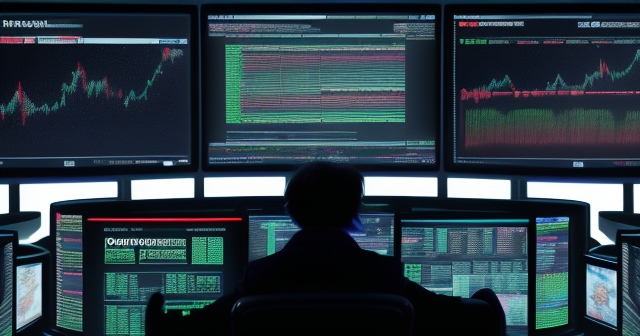Unlocking Trading Potential: A Guide to Automated Trading Systems
Automated trading systems, often referred to as algorithmic or mechanical trading, have revolutionized how individuals and institutions engage with financial markets. These sophisticated software programs automate the entire trading lifecycle, from monitoring market conditions to executing buy and sell orders. Their rising prominence is fundamentally changing the landscape, promising increased efficiency, reduced emotional interference, and the potential for consistent strategy implementation across diverse markets like stocks, crypto, futures, and forex. This article delves into what these systems are, how they operate, their various types, and why they represent a powerful approach for modern traders.
For years, trading was largely a manual endeavour, relying on a trader’s intuition, real-time analysis, and quick decision-making under pressure. While this discretionary approach remains valid for some, the advent of powerful computers and high-speed internet has opened the door to automation. We’re now in an era where complex strategies can be coded and executed at speeds impossible for humans, dramatically altering the competitive landscape. Whether you are a novice investor seeking a more disciplined approach or an experienced trader looking to scale your operations, understanding automated trading systems is no longer optional – it’s essential.
Think of an automated system as your tireless assistant. It works around the clock, never gets tired, and never gets swayed by fear or greed. It simply follows the instructions you give it, executing trades precisely when your predefined conditions are met. This mechanical execution is the core promise of automated trading: turning your trading strategy into a set of objective, repeatable rules that a computer program can follow without hesitation.
- Automated trading systems enhance efficiency by executing trades based on predefined criteria without emotional influence.
- They allow for coding of complex trading strategies that can be executed faster than human traders.
- Systems can operate in various financial markets, ensuring broad applicability for all types of traders.
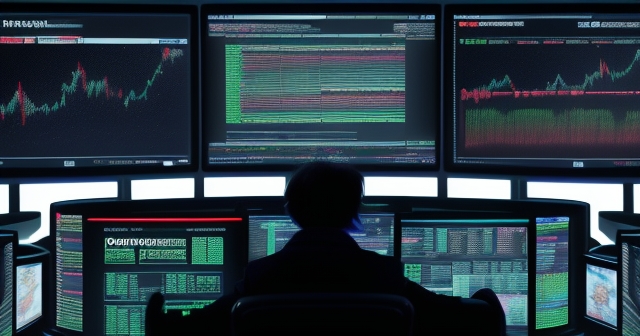
Defining the Core: What Exactly Are Mechanical Trading Systems?
At its heart, a mechanical trading system is a set of rigid, quantifiable rules that determine precisely when to buy, sell, or exit a trade. These rules are then translated into a computer program or algorithm that automatically monitors the market and executes trades on your behalf. Unlike discretionary trading, where you make decisions on the fly based on your interpretation of market conditions, a mechanical system leaves no room for subjective judgment once the rules are set. It is trading based on a blueprint.
These systems are known by several names: automated trading systems, algorithmic trading systems, mechanical trading systems, trading bots, or simply algos. Regardless of the name, the underlying principle is the same: using software to automate the trading process. The system continuously analyzes market data – such as price movements, volume, and technical indicators – and compares this data against its programmed rules. When the conditions specified by the rules are met, the system automatically generates a buy or sell signal and transmits the order directly to a brokerage platform for execution.
Consider a simple example. A rule might be: “Buy asset X when its 50-day moving average crosses above its 200-day moving average, and the Relative Strength Index (RSI) is below 70.” A mechanical system programmed with this rule would constantly monitor these indicators for asset X. The moment both conditions are true, it would automatically place a buy order. It doesn’t hesitate, it doesn’t second-guess, and it doesn’t wait to see what the news headlines say. It just acts according to the logic it was given.
This adherence to predefined, objective rules is what gives mechanical systems their power. They embody a quantified trading strategy, turning trading from an art into a science, or at least, a highly structured engineering process. This structured approach contrasts sharply with discretionary methods, which can be heavily influenced by psychological factors, leading to inconsistent results.
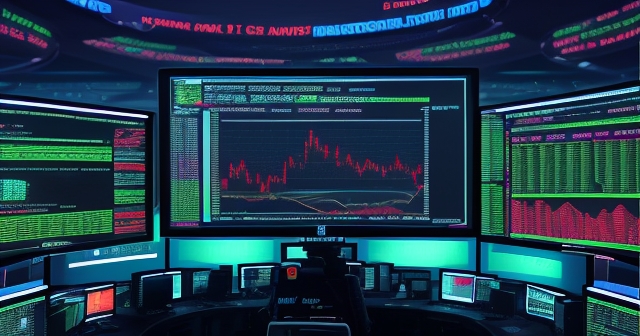
The Human Factor: Overcoming Emotional and Psychological Biases
Perhaps the most significant advantage of using a mechanical trading system is its ability to completely remove human emotion from the trading process. We’ve all experienced it: the fear of missing out (FOMO) leading to impulsive buys, the panic selling during a market dip, or holding onto a losing position too long due to hope or denial. These emotional biases and psychological biases are inherent to human nature, but they are notorious for derailing even the most well-thought-out trading plans.
A mechanical system, by definition, has no emotions. It doesn’t feel fear when prices plummet, nor does it feel greed when they surge. It simply executes the trading rules. This leads to a level of consistency and discipline that is incredibly difficult for a human trader to maintain over time, especially under pressure. Imagine you have a winning strategy that has proven effective over years of data. Yet, during a volatile market event, your gut tells you to override a signal generated by your system. If you act on that gut feeling, you’ve just injected subjectivity back into the process, potentially negating the edge your strategy provides.
By relying on objective rules and automated execution, mechanical systems ensure that every trading decision is made strictly based on the predefined criteria, not on how you are feeling that day or what the market noise is saying. This leads to a more disciplined and consistent execution of your strategy. Over the long term, this consistency is often a key factor in achieving sustainable profitability. It allows you to trust your validated strategy and stick to the plan, even when market conditions are challenging.
- Automated systems eliminate emotional decision-making in trading.
- Consistent trading decisions help in achieving long-term profitability.
- Objective rules reduce the impact of market noise and emotional biases.
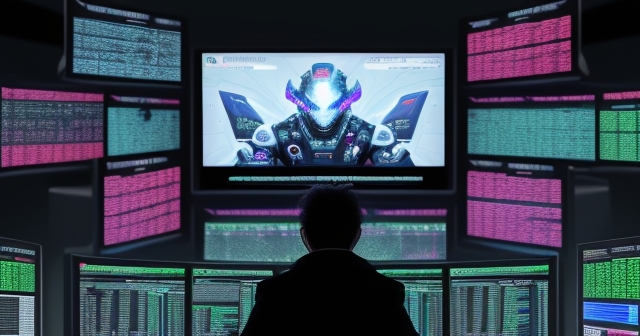
Building Blocks: Key Components of a Robust Trading System
A truly robust mechanical trading system is more than just an entry signal. It’s a comprehensive framework designed to handle various market scenarios and manage risk. While systems can range in complexity, most effective ones include several core components. Understanding these components is crucial, whether you’re building a system yourself or evaluating a pre-built one.
According to one source, a comprehensive trading system can have up to 12 distinct components, but we can simplify this into the most critical elements you need to define:
| Component | Description |
|---|---|
| Trade Setup | Defines specific market conditions or patterns that need to be present. |
| Entry Signal | Precise trigger for when to enter a trade. |
| Initial Stop Loss | Defines the price level to exit losing trades. |
| Exit Signal | Triggers for when to exit profitable trades. |
Beyond these core four, other components can include position sizing rules (how much capital to allocate per trade), scaling in/out rules, rules for handling gaps or unexpected news, and criteria for system activation/deactivation based on broader market regimes (e.g., only trade during trending markets). Each component must be clearly defined and integrated into the overall logic. A system that only focuses on entries without robust exits or stop losses is fundamentally incomplete and highly risky.

Validating Your Edge: The Crucial Practice of Backtesting
How do you know if your mechanical trading rules have a realistic chance of being profitable in the real world? This is where backtesting comes in. Backtesting is the process of testing your trading strategy’s rules on historical market data to simulate how it would have performed in the past. It’s an absolutely crucial step in developing and validating a mechanical trading system.
The process typically involves feeding historical price data and other relevant market data into your trading software or a dedicated backtesting engine. The software then runs your system’s rules against this data, simulating every trade that would have been triggered, including entries, exits, and stop losses. At the end of the simulation, you get a detailed report on the strategy’s hypothetical performance, including metrics like total profit/loss, win rate, average win/loss, maximum drawdown, profit factor, and other key performance indicators.
Backtesting allows you to verify the profitability of your rules and gain statistical confidence in your strategy’s potential edge. It helps answer questions like: “Would this strategy have made money over the last 5 years?”, “What was the largest loss it experienced (drawdown)?”, and “How frequently did it generate winning trades?”. This historical simulation provides valuable insights into the strategy’s characteristics and potential weaknesses before you risk real capital.
| Backtesting Challenge | Description |
|---|---|
| Overfitting | Designing rules that work on historical data but fail in live trading. |
| Look-ahead Bias | Using data that wouldn’t have been available at the time of trade. |
| Ignoring Transaction Costs | Not accounting for commissions, slippage, and spread, affecting profitability. |
However, it’s vital to approach backtesting with caution and realism. Backtesting shows you what *would have happened* based on *past* data, but it doesn’t guarantee future results. Markets are dynamic and constantly evolving. Furthermore, backtesting can be susceptible to pitfalls like:
Therefore, comprehensive backtesting involves rigorous testing across different market conditions, time periods, and assets. It often requires out-of-sample testing (testing on data the system wasn’t initially developed or optimized on) and forward testing (testing the system in a live market environment using a demo account before committing real funds). Backtesting, when done correctly, is an indispensable tool for building confidence in your mechanical trading system, but it is just one step in the validation process.
A World of Strategies: Implementing Diverse Approaches Mechanically
Mechanical trading systems aren’t limited to one type of trading strategy. In fact, almost any quantifiable trading approach can be translated into a set of mechanical rules. This flexibility allows traders to automate strategies across various markets and timeframes, from minute-by-minute scalping to long-term trend following.
Common strategy categories implemented mechanically include:
- Trend Following: These systems aim to identify and ride established trends in the market. Rules are often based on indicators like moving averages, trendlines, or breakout patterns. They seek to capture large price movements but may experience drawdowns during choppy or range-bound markets.
- Mean Reversion: These strategies assume that prices tend to revert to their average or “mean” over time. Rules look for assets that have deviated significantly from their typical price level and bet on them returning to the mean. Indicators like Bollinger Bands or Keltner Channels are often used. These work well in sideways or oscillating markets.
- Momentum/Rotational: Similar to trend following, but often focused on relative strength. These systems identify assets that are performing strongly relative to others and buy them, assuming the momentum will continue. They may also involve rotating capital out of underperforming assets into outperforming ones.
- Breakout Systems: These strategies look for prices to break above or below established support or resistance levels, expecting the breakout to lead to a sustained move in that direction.
- Arbitrage: These sophisticated systems seek to profit from tiny price discrepancies between highly correlated assets or different markets. Pairs trading is a specific type of statistical arbitrage.
The choice of strategy depends on your trading style, risk tolerance, and the markets you intend to trade. A mechanical system provides the framework to consistently apply these diverse strategies without emotional interference. The rules are paramount – the system merely executes them with precision.
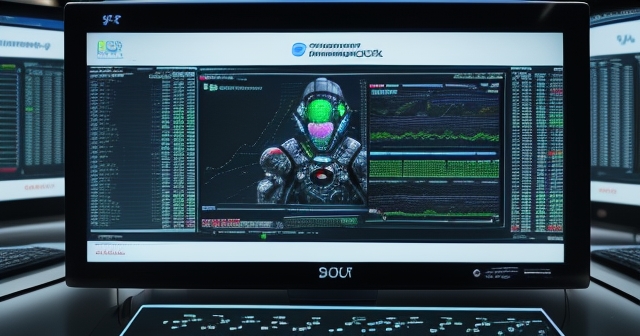
Deep Dive: Trend Following and Mean Reversion Systems
Let’s take a closer look at two fundamental strategy categories often implemented mechanically: Trend Following and Mean Reversion.
Trend Following Systems: These systems are built on the premise that markets, once they start moving in a particular direction (up or down), tend to continue in that direction for some time. The core idea is simple: buy high and sell higher (in an uptrend) or sell low and buy lower (in a downtrend). The challenge is identifying when a trend is starting, confirming its existence, and riding it until it ends. Mechanical rules for trend following often use:
- Moving Averages: A common rule is to buy when a shorter-term moving average crosses above a longer-term moving average (the “golden cross”) and sell when the opposite occurs (the “death cross”). The system simply monitors these lines.
- Price Breakouts: Rules might trigger a buy order when the price breaks above the highest high of the past N periods, signaling potential upward momentum.
- Trendlines and Channels: More advanced systems might attempt to identify and trade within or break out of price channels or trendlines.
Trend following systems aim to capture the bulk of a major market move. They may have a lower win rate than other strategies, as many potential trends fail to materialize. However, winning trades can be very large, compensating for the smaller, more frequent losses. They require patience and the ability to endure drawdowns during periods when the market is range-bound or reversing.
Mean Reversion Systems: In contrast, mean reversion strategies are based on the observation that prices often oscillate around a central tendency or average. When a price moves too far from its mean, these systems anticipate it will eventually snap back towards that average. Mechanical rules for mean reversion often use:
- Oscillators: Indicators like the RSI or Stochastic Oscillator can signal when an asset is potentially “oversold” (meaning it might bounce back up) or “overbought” (meaning it might pull back down). Rules might buy when RSI is below 30 and sell when it’s above 70.
- Bollinger Bands: These bands represent standard deviations from a moving average. Mean reversion systems often look to buy when the price touches or goes below the lower band and sell when it touches or goes above the upper band, expecting the price to revert towards the middle band (the moving average).
- Channels: Similar to Bollinger Bands, but often based on fixed percentage deviations or statistical measures of volatility.
Both trend following and mean reversion strategies can be highly effective when implemented mechanically, as the system ensures strict adherence to the chosen rules, managing the inherent risks of each approach without emotional interference.
Specialized Tactics: Understanding Pairs Trading and Statistical Arbitrage
Moving beyond simple indicator-based strategies, mechanical systems are also ideal for implementing more complex, statistically driven approaches like Pairs Trading (PST). Pairs trading is a specific type of statistical arbitrage that focuses on the relative price movements of two historically correlated assets.
The core idea is that if two assets (like two stocks in the same industry, or a stock and its corresponding ETF) have historically moved together, any temporary divergence in their price spread is likely to be corrected, with the spread eventually reverting to its mean. A pairs trading system works by:
- Identifying Correlated Pairs: Using historical data and statistical methods (like the Distance Method, Cointegration tests, or Copula functions), the system first identifies pairs of assets that have shown a strong tendency to move together.
- Monitoring the Spread: The system then continuously monitors the price difference (or ratio) between the two assets in the pair.
- Executing Trades Based on Divergence/Convergence: When the spread between the two assets diverges significantly from its historical average (e.g., one stock moves up while the other stays flat or goes down), the system triggers a trade. It simultaneously buys the underperforming asset and sells the overperforming asset. The expectation is that the spread will converge back to its mean, allowing the system to profit from both sides of the trade when it eventually exits the positions.
For example, if Stock A and Stock B usually trade very closely, and Stock A suddenly jumps while Stock B lags behind, a pairs trading system might sell Stock A and buy Stock B. If the spread later narrows as Stock B catches up or Stock A pulls back, the system closes both positions for a profit.
Pairs trading is often described as a market-neutral strategy because it involves taking both a long and a short position. In theory, this can reduce overall market risk, as losses on one leg of the pair might be offset by gains on the other. However, it has its own unique risks, such as nonconvergence risk (the spread never reverts back to its mean) or spread volatility that makes the trade unprofitable.

Implementing pairs trading effectively requires sophisticated statistical analysis and precise, low-latency execution, making it highly suitable for mechanical systems. It’s a strategy commonly employed by professional investors and hedge funds, demonstrating the power of automated systems in executing complex, data-intensive approaches that would be virtually impossible for a human to manage manually across many pairs simultaneously.
The Need for Speed: Algorithmic Execution and High-Frequency Trading
When discussing automated trading, you’ll often encounter terms like Algorithmic Trading and High-Frequency Trading (HFT). While related, they aren’t exactly the same thing.
Algorithmic Trading is the broader term for using computer programs following defined instructions (algorithms) to place trades. Mechanical trading systems are a form of algorithmic trading focused on automating strategy execution.
High-Frequency Trading (HFT) is a *type* of algorithmic trading characterized by extremely high speeds, high turnover rates, and very low holding periods for securities. HFT firms use powerful computers and sophisticated algorithms to execute thousands or millions of orders in fractions of a second. Their strategies often involve exploiting tiny, fleeting price inefficiencies or liquidity imbalances that are only visible for milliseconds.
HFT relies heavily on technological advantages, particularly low latency – the time it takes for market data to travel to the trading system and for an order to reach the exchange. This often involves co-locating servers physically close to exchange data centers and using specialized hardware acceleration technologies like FPGA (Field-Programmable Gate Array) to process data and execute trades faster than competitors.
While HFT is a type of mechanical trading in that it relies entirely on automated rules and execution, the focus is less on the trading strategy itself (though complex strategies are involved) and more on the *speed and efficiency* of execution. HFT strategies often involve market making, arbitrage, or exploiting microscopic price movements. These are typically proprietary and require massive investments in technology and infrastructure, making them accessible only to large financial institutions and specialized firms.
For the average retail or even professional trader, engaging directly in HFT is usually not feasible. However, understanding HFT is important because it significantly impacts market structure and liquidity. It highlights the technological frontier of automated trading and demonstrates the capabilities that mechanical systems can achieve when speed and efficiency are paramount.
Beyond Rules: Exploring AI and Machine Learning in Trading Systems
While many mechanical trading systems are based on fixed, deterministic rules derived from technical indicators or statistical relationships, the field is rapidly evolving with the integration of Artificial Intelligence (AI) and Machine Learning (ML).
AI-powered automated trading systems use algorithms that can learn and adapt from market data over time. Instead of being explicitly programmed with fixed “if X happens, then do Y” rules, these systems are trained on vast datasets to identify complex patterns and make predictions about future price movements or optimal trading decisions. Machine learning techniques commonly used include:
- Supervised Learning: Training a model to predict an outcome (like price direction) based on labeled historical examples.
- Unsupervised Learning: Discovering hidden patterns or clusters within market data, such as identifying different market regimes or groups of correlated assets.
- Reinforcement Learning: Training an algorithm to make a sequence of trading decisions by rewarding profitable actions and penalizing unprofitable ones, allowing the system to learn optimal strategies through trial and error in a simulated environment.
| ML Technique | Description |
|---|---|
| Supervised Learning | Models trained on labeled data to predict outcomes. |
| Unsupervised Learning | Identifying patterns in unlabeled data. |
| Reinforcement Learning | Learning optimal strategies through rewards and penalties. |
The potential advantage of AI/ML systems is their ability to identify patterns that might be too complex for human analysis or simple rule-based systems to detect. They can potentially adapt to changing market conditions without needing manual rule adjustments. For instance, an AI system might learn that a specific trend-following rule works well in volatile markets but fails in sideways markets, and automatically switch to a different strategy or adjust its parameters accordingly.
However, AI in trading is not a magic bullet. It presents its own set of challenges:
- Data Requirements: Training effective ML models requires enormous amounts of clean, high-quality market data.
- Interpretability: It can be difficult to understand *why* an AI system makes a particular trading decision (“black box” problem), making it hard to debug or build confidence.
- Overfitting: AI models are highly susceptible to overfitting historical data, leading to poor performance on new, unseen market data.
- Computational Resources: Developing and running complex AI trading systems often requires significant computing power.
Despite these challenges, AI and Machine Learning are becoming increasingly prevalent in automated trading, particularly among quantitative hedge funds and sophisticated trading firms. For retail traders, access to AI-powered tools is growing through platforms like Trade Ideas, which utilize AI for market scanning and strategy generation. While full-fledged AI strategy development might be beyond most individual traders currently, understanding its potential and limitations is key to grasping the future direction of mechanical trading.
Choosing Your Tools: Navigating Trading Platforms and Technology
Implementing a mechanical trading system requires the right technological infrastructure. At a minimum, you need trading software or a platform that allows you to define rules, connect to a broker, receive real-time market data, and execute trades automatically. The market offers a range of options, from widely used retail platforms to specialized algorithmic trading environments.
Many popular trading platforms, such as MetaTrader 4 (MT4) and MetaTrader 5 (MT5), have built-in capabilities for automated trading through their MQL programming languages. These platforms allow traders to write, backtest, and run automated trading strategies (Expert Advisors or EAs). Other platforms like NinjaTrader are specifically designed with automated and algorithmic trading in mind, offering advanced charting, backtesting tools, and programming interfaces.
Some platforms are more focused on specific types of automation or markets. For instance, some platforms cater specifically to Forex trading, while others are better suited for stocks, futures, or cryptocurrencies. There are also third-party tools and libraries (like those available in Python) that allow you to build highly customized systems and connect to brokers via APIs.
- Automation Capabilities: Does it support writing, testing, and running automated strategies?
- Backtesting Engine: How robust and realistic is the backtesting functionality?
- Data Feed Quality: Reliable, low-latency real-time data is crucial for execution.
- Broker Integration: Can the platform connect easily and reliably to your broker?
- Execution Speed: How quickly are orders processed and sent to the market?
- Supported Markets: Can you trade the assets you are interested in?
- Cost: Platform fees and broker commissions can impact profitability.
Choosing the right platform is a critical step. It’s the engine that will run your mechanical system, and its capabilities and reliability directly impact your trading performance.
If you’re focused on Forex trading, the choice of platform and broker is particularly important. Moneta Markets, for example, is an Australian-based platform offering a wide range of financial instruments, including over 1000 CFDs, making it suitable for both beginners and experienced traders exploring various markets. When considering a platform for Forex, especially for automated systems, factors like execution speed and spreads are key. Moneta Markets supports major platforms like MT4, MT5, and Pro Trader, combining high-speed execution with competitive low spreads, which can be highly beneficial for automated strategies, particularly those sensitive to transaction costs.
Furthermore, the regulatory environment and broker’s infrastructure are vital. For automated trading, relying on a broker with strong regulatory oversight and reliable execution is paramount. If you are looking for a Forex broker with regulatory guarantees and global trading capabilities, Moneta Markets holds multiple international regulations (FSCA, ASIC, FSA) and offers segregated client funds, free VPS services, and 24/7 multilingual support (including Chinese), making it a preferred choice for many traders operating automated systems.
Conclusion: Your Path Forward with Automated Trading
Mechanical trading systems offer a robust and efficient framework for navigating the complexities of financial markets. By leveraging objective rules and automation, you can mitigate emotional pitfalls, execute strategies with precision, and achieve greater consistency in your trading actions. These systems turn your trading strategy from a flexible guideline into a rigid, executable plan, removing the subjectivity that often leads to inconsistent results.
Whether you choose to implement simple rule sets based on technical indicators, explore more sophisticated statistical strategies like pairs trading, or delve into the cutting-edge world of AI-driven systems, the ability to rigorously backtest and validate your approach provides a powerful trading edge. You move from hoping your strategy works to having statistical evidence of its potential effectiveness based on historical performance.
Building and operating a mechanical trading system requires effort. You need to define clear rules, potentially learn a programming language or platform interface, perform diligent backtesting, and continuously monitor the system’s performance in live markets. It’s an iterative process of development, testing, deployment, and refinement.
However, the potential rewards – increased efficiency, consistent execution, reduced stress from emotional decision-making, and the ability to scale your trading by managing multiple strategies or markets simultaneously – make it a path worth exploring for any serious trader. As technology continues to advance, automated trading systems are poised to become an even more indispensable tool for traders seeking disciplined and potentially more profitable outcomes. By focusing on developing robust rules, validating them through backtesting, and utilizing the right tools, you can harness the power of automation to build a more consistent and disciplined trading future.
mechanical trading systemsFAQ
Q:What are mechanical trading systems?
A:Mechanical trading systems are automated systems that execute trades based on predefined rules without human emotion.
Q:How do you backtest a trading strategy?
A:Backtesting involves testing your trading strategy on historical market data to evaluate its potential effectiveness and profitability.
Q:What types of trading strategies can be automated?
A:Commonly automated strategies include trend following, mean reversion, momentum, breakout systems, and arbitrage.
